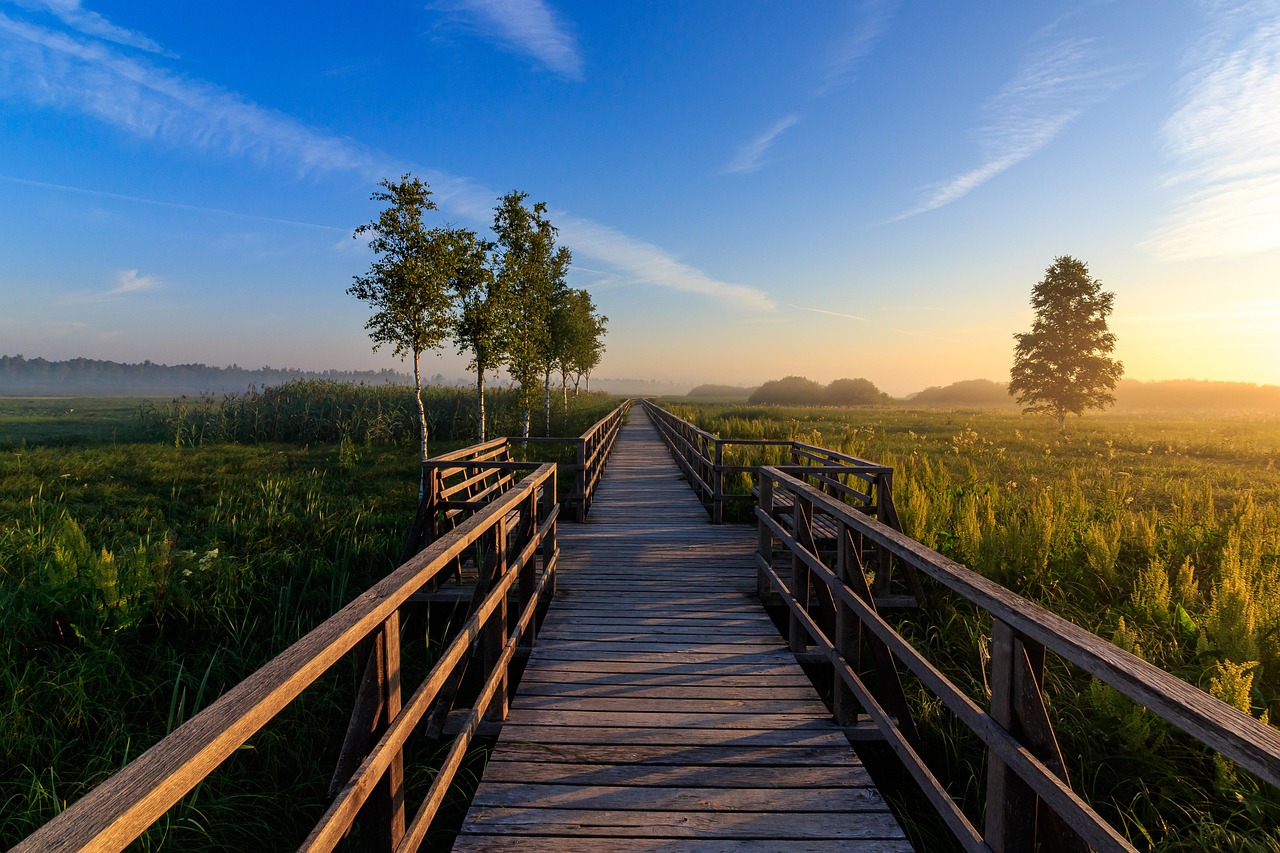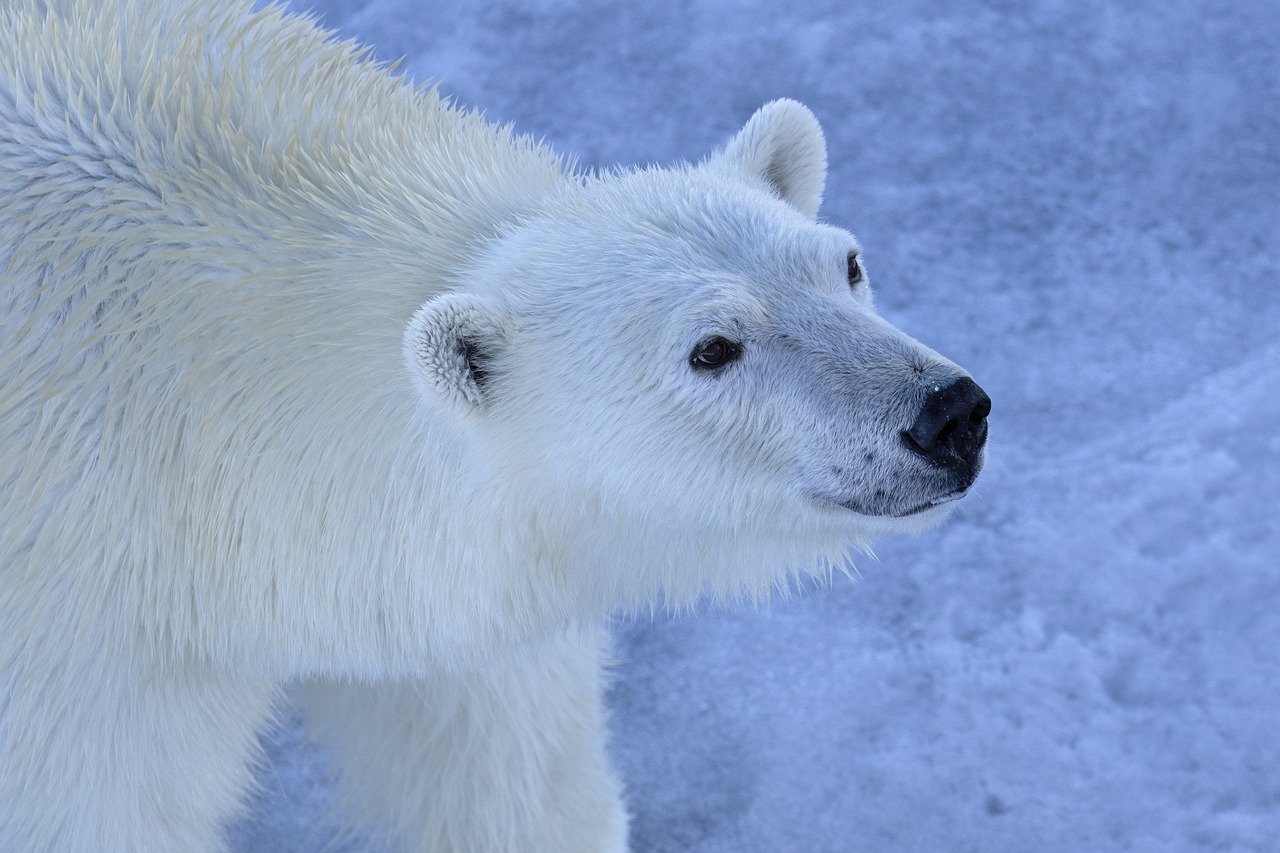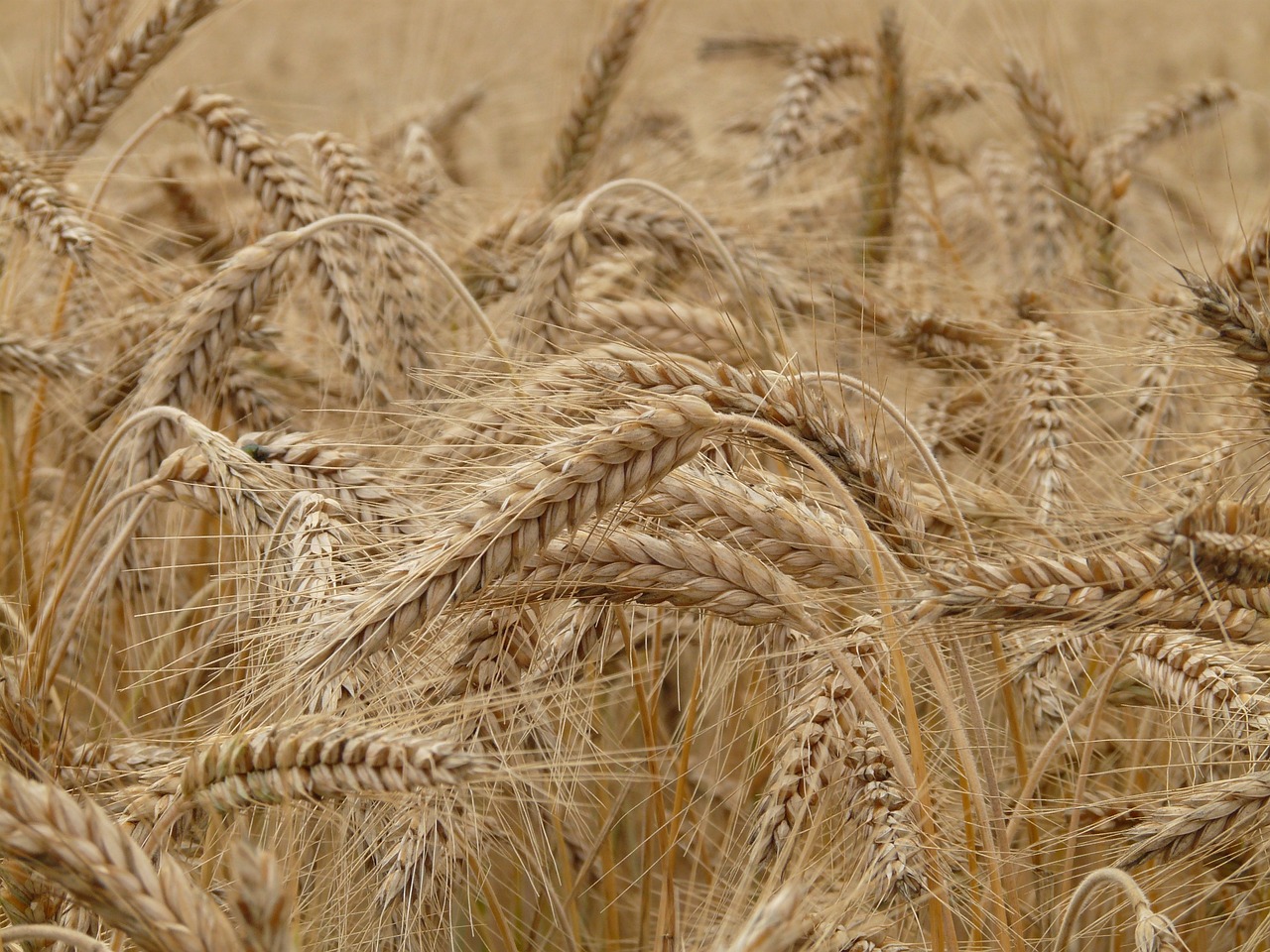The Importance of Land Conservation in Sustainable Living
Land conservation is not just a buzzword; it's a fundamental principle that underpins our ability to live sustainably on this planet. Imagine a world where natural resources are not just preserved for future generations but actively managed to promote a healthier ecosystem. This is the essence of land conservation. It involves protecting and managing our natural resources to ensure ecological balance and sustainability. As we face unprecedented challenges such as climate change, habitat loss, and biodiversity decline, understanding and implementing land conservation practices becomes more critical than ever.
So, what exactly does land conservation entail? At its core, it encompasses a variety of approaches aimed at safeguarding our environment. This can include creating protected areas, restoring degraded habitats, and promoting sustainable land-use practices. Each of these strategies plays a vital role in ensuring that our planet remains a vibrant and livable place for all forms of life. The significance of land conservation extends beyond mere environmental benefits; it also intersects with economic stability and community well-being.
In our quest for sustainable living, we must recognize that conserving land is not merely an environmental issue; it is a multifaceted challenge that requires the involvement of individuals, communities, and governments alike. By adopting land conservation practices, we can enhance biodiversity, protect ecosystems, and mitigate the impacts of climate change. These efforts not only lead to a healthier planet but also foster resilient communities and robust economies.
As we delve deeper into the various aspects of land conservation, we will uncover its profound impact on our environment, economy, and social structures. From preserving biodiversity to engaging communities in conservation efforts, every action counts. So, let’s explore how we can contribute to this noble cause and make a tangible difference in the world around us.
Land conservation is a comprehensive approach to managing and protecting our natural resources. It is essential for maintaining ecological balance, which is crucial for the survival of all species, including humans. This section will delve into the definition, significance, and various approaches to conserving land effectively.
Conserving land plays a vital role in preserving biodiversity, protecting ecosystems, and mitigating climate change. This section explores how land conservation contributes to a healthier planet and a sustainable future.
Biodiversity is essential for ecosystem resilience. This subheading examines how land conservation efforts help maintain diverse species and habitats, ensuring ecological stability and the survival of various organisms.
Restoring damaged habitats is a key aspect of land conservation. This section discusses methods used in habitat restoration and their importance in supporting wildlife and enhancing ecosystem services.
Establishing protected areas is crucial for biodiversity conservation. This subheading highlights the significance of national parks, wildlife reserves, and conservation easements in safeguarding natural landscapes and wildlife.
Land conservation not only benefits the environment but also supports local economies. This section delves into the economic advantages of preserving land, including tourism, agriculture, and sustainable resource management.
Engaging local communities in land conservation efforts is essential for success. This section explores strategies for fostering community participation and raising awareness about the importance of protecting natural resources.
Education plays a pivotal role in promoting land conservation. This subheading discusses various educational initiatives aimed at informing communities about sustainable practices and the significance of land preservation.
Volunteering for land conservation projects provides individuals with hands-on experience. This section highlights different volunteer opportunities available for those interested in contributing to land conservation efforts.
What is land conservation?
Land conservation refers to the practice of protecting and managing natural resources to maintain ecological balance and ensure sustainability.
Why is land conservation important?
Land conservation is vital for preserving biodiversity, protecting ecosystems, and ensuring sustainable living practices that benefit both the environment and local communities.
How can individuals contribute to land conservation?
Individuals can contribute by participating in local conservation efforts, volunteering for restoration projects, and adopting sustainable practices in their daily lives.

Understanding Land Conservation
This article explores the critical role of land conservation in promoting sustainable living practices, highlighting its benefits for the environment, economy, and communities while providing actionable steps for individuals and organizations.
Land conservation is more than just a trendy term thrown around by environmentalists; it embodies a crucial commitment to protecting and managing our natural resources. At its core, land conservation involves the careful stewardship of land to maintain ecological balance and ensure that future generations can enjoy the same natural beauty and benefits that we do today. Think of it as a long-term investment in our planet's health, much like saving for retirement. Just as we wouldn't want to squander our savings, we shouldn't waste our precious land and resources.
So, why is land conservation significant? Well, it serves multiple purposes that resonate on various levels—environmental, social, and economic. From preserving vital ecosystems to enhancing community well-being, the benefits are vast. For instance, when we conserve land, we are not only protecting the plants and animals that inhabit those areas but also ensuring that our air and water remain clean. It’s like creating a safety net for our environment, providing a buffer against the impacts of urbanization and climate change.
There are several approaches to conserving land effectively, each tailored to specific needs and circumstances. These include:
- Protected Areas: Establishing national parks and wildlife reserves that safeguard natural habitats.
- Conservation Easements: Legal agreements that limit development on private land while allowing landowners to retain ownership.
- Restoration Projects: Initiatives focused on rehabilitating degraded landscapes to restore their ecological function.
Each of these methods plays a pivotal role in the larger tapestry of land conservation. By understanding these different approaches, we can better appreciate the complexity and importance of preserving our natural resources. In essence, land conservation is not just about protecting nature; it's about ensuring a sustainable future for all living beings on this planet. As we delve deeper into the benefits of land conservation in the following sections, keep in mind that every small action counts. Whether it's participating in local conservation efforts or simply being mindful of our daily choices, we all have a part to play in this vital mission.
Conserving land plays a vital role in preserving biodiversity, protecting ecosystems, and mitigating climate change. This section explores how land conservation contributes to a healthier planet and a sustainable future.
Biodiversity is essential for ecosystem resilience. This subheading examines how land conservation efforts help maintain diverse species and habitats, ensuring ecological stability and the survival of various organisms.
Restoring damaged habitats is a key aspect of land conservation. This section discusses methods used in habitat restoration and their importance in supporting wildlife and enhancing ecosystem services.
Establishing protected areas is crucial for biodiversity conservation. This subheading highlights the significance of national parks, wildlife reserves, and conservation easements in safeguarding natural landscapes and wildlife.
Land conservation not only benefits the environment but also supports local economies. This section delves into the economic advantages of preserving land, including tourism, agriculture, and sustainable resource management.
Engaging local communities in land conservation efforts is essential for success. This section explores strategies for fostering community participation and raising awareness about the importance of protecting natural resources.
Education plays a pivotal role in promoting land conservation. This subheading discusses various educational initiatives aimed at informing communities about sustainable practices and the significance of land preservation.
Volunteering for land conservation projects provides individuals with hands-on experience. This section highlights different volunteer opportunities available for those interested in contributing to land conservation efforts.
Q: What is land conservation?
A: Land conservation refers to the protection and management of natural resources to ensure ecological balance and sustainability.
Q: Why is land conservation important?
A: It helps preserve biodiversity, protects ecosystems, and contributes to a healthier environment while supporting local economies.
Q: How can individuals contribute to land conservation?
A: Individuals can participate in local conservation efforts, volunteer for restoration projects, and make sustainable choices in their daily lives.

The Environmental Benefits of Land Conservation
When we think about land conservation, it’s easy to overlook how deeply it intertwines with the health of our planet. Conserving land is not just about preserving pretty landscapes; it plays a vital role in maintaining the delicate balance of our ecosystems. By protecting natural habitats, we are essentially safeguarding the very foundation of life on Earth. Imagine a world where forests, wetlands, and grasslands thrive, providing shelter and sustenance to countless species. This vision is possible through effective land conservation practices.
One of the most significant environmental benefits of land conservation is its ability to preserve biodiversity. Biodiversity, which refers to the variety of life on Earth, is crucial for ecosystem resilience. Each species, no matter how small, plays a unique role in its habitat. For instance, bees pollinate plants, while predators help control herbivore populations. When land is conserved, we provide these species with the space they need to thrive. This is particularly important as many species face threats from habitat loss, climate change, and pollution.
Think of biodiversity as a complex web of life. If one strand is pulled or broken, the entire web can unravel. Land conservation efforts help maintain this web by ensuring that diverse species and habitats coexist. Protected areas, such as national parks and wildlife reserves, serve as safe havens for endangered species and help maintain genetic diversity. When we invest in land conservation, we are investing in the survival of these species and, ultimately, our own future.
Another critical aspect of land conservation is habitat restoration. Over time, many natural habitats have been damaged due to human activities such as urbanization, agriculture, and logging. Habitat restoration involves rehabilitating these areas to support wildlife and enhance ecosystem services. Techniques such as reforestation, wetland restoration, and invasive species removal can breathe new life into degraded landscapes. For example, restoring a wetland not only provides a home for various species but also improves water quality and reduces flood risks. It’s like giving nature a second chance to thrive!
Establishing protected areas is crucial for biodiversity conservation. These areas, including national parks, wildlife reserves, and conservation easements, play a significant role in safeguarding natural landscapes and wildlife. They act as buffers against human encroachment, allowing ecosystems to function without interference. In these protected zones, wildlife can roam freely, ecosystems can flourish, and natural processes can continue uninterrupted. The benefits extend beyond the environment; they also provide recreational opportunities for people and can even boost local economies through eco-tourism.
In summary, the environmental benefits of land conservation are profound and multifaceted. By preserving biodiversity, restoring habitats, and establishing protected areas, we not only contribute to a healthier planet but also ensure a sustainable future for generations to come. The choices we make today regarding land use will determine the health of our ecosystems and the well-being of our communities. So, let’s embrace land conservation as a key component of our environmental strategy!
- What is land conservation? Land conservation refers to the protection and management of natural resources to ensure ecological balance and sustainability.
- Why is biodiversity important? Biodiversity is essential for ecosystem resilience, providing stability and supporting various life forms that contribute to ecological health.
- How can individuals contribute to land conservation? Individuals can participate through volunteering, supporting conservation organizations, and practicing sustainable land use in their communities.
- What are some examples of protected areas? Examples include national parks, wildlife reserves, and conservation easements that are designated to protect natural landscapes and habitats.

Preserving Biodiversity
is not just a noble cause; it’s a necessity for the health of our planet. Imagine a world where every species plays a unique role, much like a well-orchestrated symphony. Each organism, from the tiniest insect to the largest mammal, contributes to the intricate web of life that supports ecosystems. When we talk about biodiversity, we refer to the variety of life on Earth, encompassing different species, genetic variations, and ecosystems. The greater the biodiversity, the more resilient our ecosystems become, enabling them to withstand environmental changes and pressures.
However, human activities such as deforestation, pollution, and urban development have led to alarming rates of species extinction and habitat loss. This is where land conservation steps in as our superhero, working tirelessly to protect these vital ecosystems. By preserving natural habitats and implementing conservation strategies, we can help maintain the delicate balance of life. For example, conservation efforts often focus on creating protected areas, such as national parks and wildlife reserves, where species can thrive without the threat of human interference.
Moreover, land conservation initiatives often employ a variety of strategies to enhance biodiversity. Some of these include:
- Habitat Restoration: This involves rehabilitating damaged ecosystems, reintroducing native species, and removing invasive plants to restore the natural balance.
- Wildlife Corridors: These are protected pathways that allow animals to migrate safely between habitats, ensuring genetic diversity and population stability.
- Sustainable Land Management: Practices such as agroforestry and organic farming can enhance biodiversity while also providing food and resources for communities.
In addition to these strategies, community involvement is crucial for successful biodiversity preservation. Local communities often have valuable knowledge about their environment and can play an active role in conservation efforts. Engaging them not only fosters a sense of ownership but also promotes sustainable practices that benefit both people and wildlife.
Ultimately, preserving biodiversity is about more than just saving cute animals or picturesque landscapes; it’s about ensuring a sustainable future for ourselves and generations to come. A world rich in biodiversity is a world that can provide clean air, fresh water, and fertile soil—resources that are essential for our survival. So, the next time you think about land conservation, remember that it’s not just a personal passion; it’s a global responsibility.
Q1: Why is biodiversity important?
A1: Biodiversity is crucial because it supports ecosystem services that provide food, clean water, and air, and helps regulate the climate.
Q2: How can individuals contribute to biodiversity preservation?
A2: Individuals can contribute by supporting conservation organizations, practicing sustainable living, and participating in local conservation projects.
Q3: What are the main threats to biodiversity?
A3: The main threats include habitat destruction, climate change, pollution, and invasive species.
Q4: What role do protected areas play in biodiversity conservation?
A4: Protected areas serve as safe havens for wildlife and ecosystems, allowing species to thrive without human interference.

Habitat Restoration
Habitat restoration is a crucial element of land conservation, acting as a lifeline for ecosystems that have suffered degradation. Imagine a once-thriving forest, now reduced to barren land due to human activities or natural disasters. Restoring such habitats is not just about planting a few trees; it’s about reviving the entire ecosystem, bringing back the intricate web of life that once flourished there. The process involves a variety of techniques aimed at returning the land to its natural state, which can include reforestation, wetland restoration, and the removal of invasive species.
One of the primary methods of habitat restoration is reforestation, where native tree species are planted to rebuild forest cover. This is essential because forests play a significant role in carbon sequestration, which helps mitigate climate change. Additionally, these restored forests provide shelter and food for various wildlife species, contributing to biodiversity. Another important method is wildlife corridor creation, which allows animals to migrate safely between fragmented habitats, ensuring genetic diversity and ecological balance.
Moreover, the removal of invasive species is a vital step in habitat restoration. Invasive species can outcompete native flora and fauna, leading to a decline in biodiversity. By carefully managing these invaders, we can give native species a fighting chance to thrive once again. The restoration process often requires a collaborative effort among ecologists, local communities, and volunteers, all working together to bring life back to the land.
To illustrate the impact of habitat restoration, consider the following table that highlights some successful restoration projects:
| Project Name | Location | Restoration Method | Outcome |
|---|---|---|---|
| Everglades Restoration | Florida, USA | Wetland restoration | Improved water flow and increased wildlife populations |
| Yellowstone National Park | Wyoming, USA | Reintroduction of wolves | Restored balance in the ecosystem, increased biodiversity |
| Great Green Wall | Sahel Region, Africa | Afforestation | Combat desertification and improve local livelihoods |
These examples demonstrate that habitat restoration can lead to significant ecological and social benefits. However, it’s essential to remember that restoration is not a one-time effort; it requires ongoing management and monitoring to ensure that the ecosystems remain healthy and resilient. By investing in habitat restoration, we are not only protecting our planet's biodiversity but also securing a sustainable future for generations to come.
- What is habitat restoration? Habitat restoration is the process of returning a damaged or degraded ecosystem to its natural state, often involving reforestation, wetland restoration, and the removal of invasive species.
- Why is habitat restoration important? It helps preserve biodiversity, supports ecosystem services, and combats climate change by restoring natural habitats that store carbon and provide resources for wildlife.
- How can I get involved in habitat restoration? You can participate by volunteering with local conservation organizations, joining community restoration projects, or even starting your own restoration initiatives in your area.

Protected Areas
Protected areas are designated regions that are set aside to conserve the natural environment and its biodiversity. These areas play a critical role in safeguarding ecosystems, wildlife, and natural resources from the pressures of urbanization, agriculture, and industrial development. Think of protected areas as the Earth's safe havens, where nature can thrive without the constant interference of human activity. They serve as vital refuges for countless species, ensuring that we maintain a rich tapestry of life on our planet.
Establishing protected areas is not just about drawing lines on a map; it's about creating a network of sanctuaries that support ecological integrity and resilience. These areas can take many forms, including:
- National Parks: Large expanses of land that are preserved for public enjoyment and ecological health.
- Wildlife Reserves: Areas specifically designated for the protection of endangered species and their habitats.
- Conservation Easements: Legal agreements that restrict land use to protect its conservation values while allowing private ownership.
One of the most significant benefits of protected areas is their ability to preserve biodiversity. Biodiversity is the variety of life found in a particular habitat or ecosystem, and it is crucial for maintaining ecological balance. Protected areas serve as a refuge for endangered species and help to maintain genetic diversity, which is vital for adaptation and resilience against environmental changes. For instance, when habitats are protected, species can thrive and reproduce, contributing to a healthier ecosystem.
Moreover, protected areas also provide essential ecosystem services that benefit human populations. These services include:
- Water purification: Forested protected areas help filter and regulate water supplies.
- Climate regulation: Natural landscapes sequester carbon, helping to mitigate climate change.
- Recreation and tourism: Protected areas attract millions of visitors each year, providing economic benefits to local communities.
In conclusion, protected areas are indispensable for the sustainability of our planet. They not only conserve biodiversity but also provide numerous benefits to human societies. By protecting these natural spaces, we ensure that future generations inherit a world rich in ecological diversity and vitality. As stewards of the Earth, we have a responsibility to advocate for the establishment and maintenance of protected areas, recognizing their critical role in our shared environment.
Q: What is a protected area?
A protected area is a clearly defined geographical space recognized, dedicated, and managed to achieve specific conservation objectives, such as preserving biodiversity and natural resources.
Q: Why are protected areas important?
They are essential for conserving biodiversity, providing ecosystem services, and offering spaces for recreation and tourism, all of which contribute to a sustainable future.
Q: How can individuals support protected areas?
Individuals can support protected areas by visiting them, volunteering for conservation efforts, advocating for policies that protect natural spaces, and educating others about their importance.

Economic Impacts of Land Conservation
Land conservation is not just a buzzword thrown around by environmentalists; it has significant economic implications that benefit communities and local economies. When we think about protecting our land, we often picture lush forests and pristine waters, but the truth is that conservation can also be a powerful driver of economic growth. By preserving natural spaces, we create opportunities for industries like tourism, agriculture, and sustainable resource management to flourish.
For instance, consider the tourism sector. National parks and protected areas attract millions of visitors each year, generating revenue for local businesses. According to a study by the National Park Service, every dollar spent in national parks generates about $10 in economic return. This means that by investing in land conservation, we are not only safeguarding our environment but also enhancing the economic vitality of our communities. Tourists spend money on lodging, food, and activities, creating jobs and supporting local economies.
Moreover, land conservation promotes sustainable agriculture. By implementing conservation practices, farmers can improve soil health, enhance water quality, and increase crop yields. This is crucial because healthy ecosystems provide the foundation for productive agriculture. For example, practices such as crop rotation and cover cropping help maintain soil fertility and reduce the need for chemical fertilizers. This not only benefits the environment but also leads to cost savings for farmers and a more stable food supply for communities.
Additionally, preserving land can lead to increased property values. Areas with green spaces and protected natural resources are often more desirable places to live. Homebuyers are willing to pay a premium for properties near parks or nature reserves, which can bolster local real estate markets. This increase in property values can result in higher tax revenues for local governments, allowing them to fund essential services and infrastructure.
In summary, the economic impacts of land conservation are profound and multifaceted. From boosting tourism and agriculture to increasing property values, the benefits extend far beyond just environmental protection. By prioritizing land conservation, we are investing in a sustainable future that supports both our planet and our economy. It's a win-win situation where ecological health and economic prosperity go hand in hand.
- What is land conservation?
Land conservation refers to the practice of protecting and managing natural resources to maintain ecological balance and ensure sustainable use. - How does land conservation benefit the economy?
Land conservation can boost local economies through increased tourism, sustainable agriculture, and higher property values. - What role do communities play in land conservation?
Community involvement is crucial for successful land conservation, as local engagement fosters awareness and support for sustainable practices. - Are there volunteer opportunities in land conservation?
Yes, many organizations offer volunteer programs that allow individuals to participate in hands-on conservation projects.

Community Involvement in Land Conservation
When it comes to land conservation, the saying "it takes a village" couldn't be more accurate. Community involvement is not just beneficial; it's essential for the success of any conservation initiative. Think of it as a team sport—everyone has a role to play, and when individuals come together, they can achieve remarkable outcomes. Engaging local communities fosters a sense of ownership and responsibility towards the environment, which is crucial for sustaining conservation efforts over the long term.
One of the most effective ways to encourage community participation is through educational programs. These initiatives can take many forms, from workshops and seminars to school programs and community events. By educating residents about the importance of land conservation, we empower them to take action. For example, a local workshop might cover topics such as sustainable gardening practices, the importance of native plants, and how to reduce waste. When community members understand the impact of their actions, they are more likely to engage in conservation efforts.
Moreover, volunteering for land conservation projects offers individuals a chance to get their hands dirty—literally! These opportunities not only provide practical experience but also create a strong bond among participants. Whether it's planting trees, cleaning up local parks, or restoring wetlands, volunteering can transform a simple act into a powerful movement. Imagine the sense of pride and accomplishment that comes from seeing a thriving ecosystem that you helped restore!
To facilitate community involvement, organizations can implement various strategies, such as:
- Hosting community meetings to discuss conservation goals and gather input.
- Creating partnerships with local schools and businesses to promote conservation education.
- Encouraging residents to form conservation groups that focus on specific local issues.
Another key aspect of community involvement is the power of social media. In today's digital age, platforms like Facebook, Instagram, and Twitter can be used to raise awareness, share success stories, and mobilize volunteers. A single post can reach thousands of people, sparking interest and encouraging participation. For instance, a local conservation group might share before-and-after photos of a restored habitat, inspiring others to join the cause.
Ultimately, the success of land conservation efforts hinges on the active participation of the community. By fostering a culture of involvement, we not only enhance our natural landscapes but also strengthen the bonds within our communities. Together, we can create a sustainable future that benefits both people and the planet.
Q: How can I get involved in local land conservation efforts?
A: There are many ways to get involved, including volunteering for local conservation projects, participating in community meetings, and attending educational workshops. Check with local environmental organizations for specific opportunities.
Q: What are some benefits of community involvement in land conservation?
A: Community involvement leads to greater awareness and education about environmental issues, fosters a sense of ownership and responsibility, and can result in more effective conservation initiatives through collective effort.
Q: Are there any costs associated with participating in land conservation activities?
A: Most community conservation activities are free or low-cost, especially volunteer opportunities. Some educational programs may have a nominal fee, but many organizations offer scholarships or free resources.

Educational Programs
Education is the cornerstone of effective land conservation. Without a solid understanding of the issues at hand, how can we expect individuals and communities to take action? Educational programs aimed at promoting land conservation are essential in fostering a culture of sustainability. These initiatives can range from local workshops to comprehensive school curricula, all designed to enlighten participants about the significance of preserving our natural resources.
One of the most impactful ways to educate people about land conservation is through interactive workshops. These hands-on sessions allow participants to engage directly with the environment, learning about local ecosystems, the importance of biodiversity, and how their actions can lead to positive change. Imagine a group of eager learners, planting native trees in a community park while discussing the benefits of native species for local wildlife. This not only reinforces the lessons learned but also cultivates a sense of ownership and responsibility towards the land.
In addition to workshops, many organizations offer educational programs in schools. By integrating conservation topics into the curriculum, educators can inspire the next generation to appreciate and protect their surroundings. For instance, students might participate in projects that involve:
- Conducting biodiversity surveys in local parks
- Creating presentations on the impact of climate change on local ecosystems
- Engaging in community clean-up days to promote environmental stewardship
These programs not only educate students but also encourage them to become advocates for sustainability in their communities. Moreover, partnerships between schools and local conservation groups can lead to exciting initiatives, such as field trips to national parks or wildlife reserves, where students can witness conservation efforts firsthand.
Another innovative approach is the use of digital platforms to spread awareness about land conservation. Online courses and webinars can reach a broader audience, providing valuable information to those who may not have access to local programs. These resources can cover a range of topics, from sustainable farming practices to the importance of protecting wetlands. The beauty of digital education is that it allows participants to learn at their own pace, making it accessible to everyone, regardless of their schedule.
In summary, educational programs play a crucial role in land conservation by equipping individuals with the knowledge and skills needed to make informed decisions about their environment. By fostering a deeper understanding of ecological principles and the importance of preserving our natural resources, we can inspire a movement towards a more sustainable future. So, whether through hands-on workshops, school programs, or digital learning, education is the key to empowering communities to take action in safeguarding our planet.
Q: Why is education important for land conservation?
A: Education raises awareness about environmental issues and equips individuals with the knowledge to engage in sustainable practices, fostering a culture of conservation.
Q: What types of educational programs are available?
A: Educational programs can include workshops, school curricula, online courses, and community outreach initiatives that focus on various aspects of land conservation.
Q: How can I get involved in educational programs?
A: You can participate in local workshops, volunteer for conservation projects, or advocate for the inclusion of conservation topics in school curricula.
Q: Are there online resources for learning about land conservation?
A: Yes, many organizations offer online courses and webinars that cover a wide range of topics related to land conservation and sustainable practices.

Volunteer Opportunities
Volunteering for land conservation projects is not just a way to give back to the environment; it’s also an opportunity to connect with nature, meet like-minded individuals, and gain hands-on experience that can be both fulfilling and educational. Imagine being part of a team that plants trees, restores habitats, or monitors wildlife populations. Each of these activities not only contributes to the health of our planet but also enriches your personal life. So, how can you get involved? There are numerous organizations and initiatives that welcome volunteers, each offering a unique experience tailored to different interests and skill sets.
For instance, local parks and wildlife reserves often have volunteer days where you can help with various tasks, such as trail maintenance, invasive species removal, or wildlife surveys. These activities are crucial for maintaining the health and accessibility of these natural spaces. Additionally, many non-profits focus on specific conservation issues, such as wetland restoration or forest conservation. By volunteering with these organizations, you can dive deeper into specific areas of interest while making a tangible impact.
Moreover, volunteering doesn’t always mean getting your hands dirty. Many organizations need help with administrative tasks, fundraising events, or educational outreach programs. If you have skills in marketing, social media, or event planning, you can contribute significantly to the cause without necessarily being out in the field. This flexibility allows everyone to find a way to get involved, regardless of their physical capabilities or experience level.
To help you find the right opportunity, here are some avenues to explore:
- Local Conservation Groups: Check out community boards or websites for local conservation groups that regularly organize volunteer events.
- National Organizations: Many national organizations, such as the Sierra Club or The Nature Conservancy, have volunteer programs that you can join.
- University Programs: If you’re a student, many universities offer volunteer opportunities through their environmental studies or biology departments.
- Online Platforms: Websites like VolunteerMatch or Idealist can connect you with conservation projects in your area.
In addition to these opportunities, participating in volunteer programs can also serve as a gateway to further involvement in environmental advocacy. Many volunteers find themselves inspired to take on leadership roles or even start their own initiatives after experiencing the impact of their contributions firsthand. Whether you’re planting trees, conducting research, or educating the public, your efforts in land conservation can ignite a passion that leads to lifelong commitment and advocacy for sustainable living.
1. How do I find volunteer opportunities for land conservation?
You can start by researching local conservation organizations, checking community bulletin boards, or visiting websites like VolunteerMatch. Many national organizations also have dedicated volunteer sections on their websites.
2. What kind of skills do I need to volunteer?
While some roles may require specific skills, many volunteer opportunities are designed for individuals of all skill levels. A willingness to learn and a passion for the environment are often the most important qualifications.
3. Are there any age restrictions for volunteering?
Age restrictions vary by organization. Some may have minimum age requirements, while others welcome families and youth groups. Always check with the specific organization for their guidelines.
4. Can volunteering lead to job opportunities in conservation?
Absolutely! Many people start as volunteers and eventually secure paid positions within conservation organizations. Volunteering can provide valuable experience, networking opportunities, and references that can help you in your career.
Frequently Asked Questions
- What is land conservation?
Land conservation refers to the practice of protecting and managing natural resources to maintain ecological balance. It involves various strategies aimed at preserving the environment, wildlife habitats, and natural landscapes for future generations.
- Why is land conservation important for the environment?
Land conservation is crucial as it helps preserve biodiversity, protect ecosystems, and combat climate change. By conserving land, we ensure that diverse species can thrive and that natural resources remain available for future use, contributing to a healthier planet.
- How does land conservation benefit local economies?
Conserving land can boost local economies through sustainable tourism, agriculture, and resource management. Protected areas attract visitors, which can lead to increased spending in local communities, while sustainable practices help maintain agricultural productivity.
- What are protected areas and why are they significant?
Protected areas, such as national parks and wildlife reserves, are designated spaces that safeguard natural landscapes and habitats. They play a vital role in conserving biodiversity and providing a sanctuary for endangered species, ensuring ecological stability.
- How can communities get involved in land conservation?
Communities can engage in land conservation through educational programs, volunteer opportunities, and local initiatives. By participating in these activities, individuals can learn about sustainable practices and contribute directly to preserving their natural surroundings.
- Are there volunteer opportunities for land conservation?
Yes! Many organizations offer volunteer programs focused on land conservation. These opportunities provide hands-on experience in various projects, such as habitat restoration and community education, allowing individuals to make a positive impact.
- How can education promote land conservation?
Education is key to promoting land conservation as it raises awareness about the importance of protecting natural resources. Educational initiatives can inform communities about sustainable practices and inspire individuals to take action in their local environments.



















